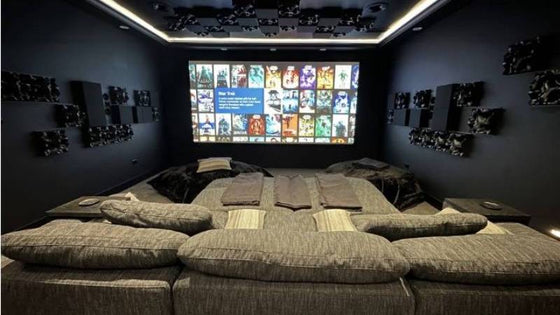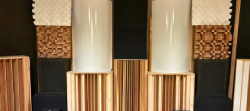Creating a system you love shouldn't be difficult. The Acoustic Frontiers blog is here to help.
This article outlines the image brightness standards, as measured in foot lamberts, for home theaters. It also explains how to calculate predicted foot lamberts for any given screen and projector combination.
Any display should have enough brightness for the viewing environment in which it is used. Brightness, or more correctly luminance, is a quantifiable measure of the amount of light from a display:
Luminance is often used to characterize emission or reflection from flat, diffuse surfaces. The luminance indicates how much luminous power will be detected by an eye looking at the surface from a particular angle of view. Luminance is thus an indicator of how bright the surface will appear. Wikipedia
The US unit of luminance is the Foot-lambert or ft-L whereas the SI unit is Candela per Square Metre or cd/m2. 1 ft-L equals 3.426 cd/m2. The US unit is the one typically used in home theater design and calibration.
Targets for luminance depend on the amount of ambient light in the viewing environment. The reason for this is that the level of ambient light affects the perceived dynamic range in the image by lowering the on/off contrast ratio. Higher luminance levels are needed to maintain good contrast performance in environments with ambient light.
In light controlled environments it is common practice to use standards derived from commercial theaters. The main target is detailed in SMPTE 196M which defines the luminance target as 16ftL (without a film in the projector, which typically equates to 14ftL with a film). The Digital Cinema System Specification has adopted this standard with their 14ftL +/-3ftL target.
For environments without ambient light control the important thing is to maintain a good contrast ratio. For movie watching a minimum contrast ratio of 1000:1 is recommended. Based on this Digital Projection, a manufacturer of projectors, recommends 40ftL for environments with some ambient light and 60ftL for high ambient light locations.
Luminance figures for flat panel displays are around 40-60ftL for Plasmas and 80-120ftL for LCDs. For this reason LCDs are often used in locations with high ambient brightness such as family rooms with lots of windows.
For projection systems we need to calculate luminance to ensure the combination of projector, screen material and screen size will provide enough light output to meet targets.
Luminance in FtL= (Illuminance in Lumens / Screen Area in Ft2) * Screen Gain
A big screen with unity or negative gain (like the wide viewing angle, acoustically transparent types we like to use) will need a high light output projector to meet brightness targets.
There are two factors which might increase the luminance target we aim for when designing a projection system for a home theater:
Need help designing a projection system or choosing a screen, projector, masking system or anamorphic lens? Contact us now!
"No other subwoofer system I’ve owned even comes close to what this room delivers. Reaching out to Acoustic Frontiers was one of the best decisions I’ve made—I highly recommend working with them if you want to get the most out of your theater."

Nyal Mellor, Founder, Acoustic Frontiers


Nyal Mellor
Author